John Hurrell – 12 April, 2019
The paintings as reliefs are spatially complicated, being quite intricate with lots of little nooks and crannies and partially hidden (paint coated) ledges. This means the overlapping and partially hidden projections take time to explore: you need to check out different types of smudged or scuffed paint, different viscosities with bristle marks, traces of dragged roller edges or brushed on dribbles. They challenge the viewer to alter any notion of visual perfection and to think about the order of applicatory events.
The current Stephen Bambury show at Trish Clark’s presents nine paintings (all wall reliefs), a house-shaped sculpture, two screenprints, a photograph and a painted drawing on a crushed box: a lot of variation in method and content. This show is full of surprises.
Obviously the abstract paintings dominate. To arrive at these Bamburys, vestiges from Suprematist painters Malevich and El Lissitzky seem to have been filtered through a cognisance of Frank Stella and Imi Knoebel and then reorganised. Lots of diagonally aligned rectangles, some quadrilaterals with perspectivally receding vanishing points, and a few overlapping squares create a different kind of viscerality from Bambury‘s earlier more compositionally stable ‘cross’ paintings, a less grounded mood in its dynamic—one more agitated, spatially unpredictable and restless. I prefer it enormously.
Many of the works are calculated in their ‘roughness’, with ‘untidy’ paint marks from the roller application or paint-sloppin’ process having been deliberately unremoved or not made invisible. Instead of painting all the sheet-metal components before gluing them down he has sometimes coated many elements after forming a final composition, causing various ‘accidents’ or ‘mistakes’ that he has not later hidden, that remain obviously in sight: a calculated process. Occasionally the two procedural ‘logics’ are combined.
This means that looking closely and thinking about the production procedures—the sequencing of Bambury‘s paint application and figuring out of which edges are merely painted and not cut-out—is more important that having the experience of aesthetic delectation via the final artifact. It is something quite different, being about moving around the work, looking up, over, sideways and under, and thinking like a detective about the making.
The paintings as reliefs are spatially complicated, being quite intricate with lots of little nooks and crannies and partially hidden (paint coated) ledges. This means the overlapping and partially hidden projections take time to explore: you need to check out different types of smudged or scuffed paint, different viscosities with bristle marks, traces of dragged roller edges or brushed on dribbles. They challenge the viewer to alter any notion of visual perfection and to think about the order of applicatory events.
As a pronounced contrast there is also one work that is (in comparison) exceptionally pristine in its finish, with impeccable edges, the sharpest of tonally contrasting shapes and less underpainting showing through. With lots of intricate slivers of intensely saturated colour peeking out from behind horizontal and vertical edges, “Time is out of Joint” (For Colin) is I think the show’s highlight, with its bifurcated composition and a suggestion of a computer screen.
Because it is horizontally split—and dynamically stable with its balanced symmetry—it avoids the diagonal and vertical vectors of most of Bambury‘s other reliefs, their sense of sliding along skewly-aligned ‘fault-lines’. It has a different mood; a different visual ethos that does not involve process.
Van Doesberg’s Donkey is a five part work in a small room on its own, featuring quite thick honeycombed aluminium. It is a nice foil for the compositionally similar lefthand (but black) half of the just-mentioned “Time is Out of Joint” (for Colin): five riffs on that work’s front projecting quadrilateral plane—with bands of colour and floating cross-tips hovering behind its sides. It differs from the other paintings because the strips of saturated chroma are physically close to the wall while the pale outer plane is greatly subdued.
Overall this is quite an exuberant Bambury show with the overlapping, angled, colourful oblongs creating a sense of jiggling movement, floating, receding and exhilarating in their instability.
John Hurrell
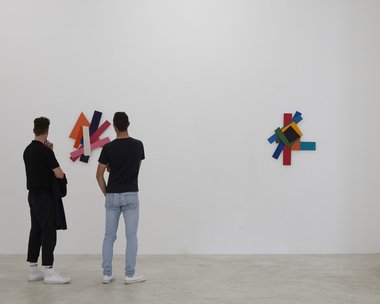
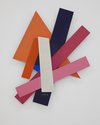
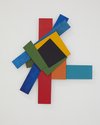

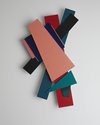
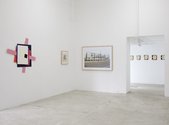
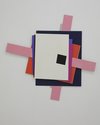

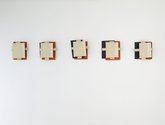
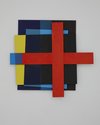
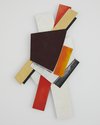

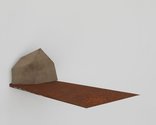
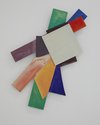
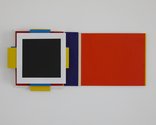
 Two Rooms presents a program of residencies and projects
Two Rooms presents a program of residencies and projects Advertising in this column
Advertising in this column



This Discussion has 0 comments.
Comment
Participate
Register to Participate.
Sign in
Sign in to an existing account.